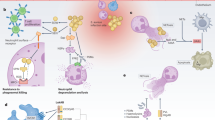Abstract
Staphylococcus aureus is an important pathogen of severe invasive tissue infection, e.g. osteomyelitis that can develop to chronicity and become extremely difficult to treat. Recent research revealed that S. aureus can dynamically switch to small colony variants (SCVs) that are adapted bacterial phenotypes for long-term persistence. The underlying mechanisms of the bacterial switching and adaptation process are largely dependent on an intact Sigma B regulon. As SigB is known as a transcription factor that modulates the stress response of several Gram-positive bacteria, it is most likely required by the bacteria to cope with the intracellular stress conditions. Here, we demonstrate in a long-term infection model of human osteoblasts that S. aureus continuously upregulated the expression of SigB during intracellular persistence. The increased SigB expression was accompanied by upregulation of adhesins and downregulation of toxins, which are characteristics for SCV phenotypes. These data further stress the role of SigB during chronic infections that could be a novel target for preventive or therapeutic measures to avoid chronic infections.

Similar content being viewed by others
References
Hecker M, Reder A, Fuchs S, Pagels M, Engelmann S (2009) Physiological proteomics and stress/starvation responses in Bacillus subtilis and Staphylococcus aureus. Res Microbiol 160:245–258
Horst SA, Hoerr V, Beineke A, Kreis C, Tuchscherr L, Kalinka J, Lehne S, Schleicher I, Kohler G, Fuchs T et al (2012) A novel mouse model of Staphylococcus aureus chronic osteomyelitis that closely mimics the human infection: an integrated view of disease pathogenesis. Am J Pathol 181:1206–1214
Kriegeskorte A, Konig S, Sander G, Pirkl A, Mahabir E, Proctor RA, von Eiff C, Peters G, Becker K (2011) Small colony variants of Staphylococcus aureus reveal distinct protein profiles. Proteomics 11:2476–2490
Lew DP, Waldvogel FA (2004) Osteomyelitis. Lancet 364:369–379
Lowy FD (1998) Staphylococcus aureus infections. N Engl J Med 339:520–532
Mitchell G, Lamontagne CA, Brouillette E, Grondin G, Talbot BG, Grandbois M, Malouin F (2008) Staphylococcus aureus SigB activity promotes a strong fibronectin–bacterium interaction which may sustain host tissue colonization by small-colony variants isolated from cystic fibrosis patients. Mol Microbiol 70:1540–1555
Mitchell G, Seguin DL, Asselin AE, Deziel E, Cantin AM, Frost EH, Michaud S, Malouin F (2010a) Staphylococcus aureus sigma B-dependent emergence of small-colony variants and biofilm production following exposure to Pseudomonas aeruginosa 4-hydroxy-2-heptylquinoline-N-oxide. BMC Microbiol 10:33
Mitchell G, Brouillette E, Seguin DL, Asselin AE, Jacob CL, Malouin F (2010b) A role for sigma factor B in the emergence of Staphylococcus aureus small-colony variants and elevated biofilm production resulting from an exposure to aminoglycosides. Microb Pathog 48:18–27
Mitchell G, Fugere A, Pepin GK, Brouillette E, Frost EH, Cantin AM, Malouin F (2013) SigB is a dominant regulator of virulence in Staphylococcus aureus small-colony variants. PLoS ONE 8:e65018
Novick RP, Geisinger E (2008) Quorum sensing in staphylococci. Annu Rev Genet 42:541–564
Proctor RA, von Eiff C, Kahl BC, Becker K, McNamara P, Herrmann M, Peters G (2006) Small colony variants: a pathogenic form of bacteria that facilitates persistent and recurrent infections. Nat Rev Microbiol 4:295–305
Sendi P, Proctor RA (2009) Staphylococcus aureus as an intracellular pathogen: the role of small colony variants. Trends Microbiol 17:54–58
Tuchscherr L, Heitmann V, Hussain M, Viemann D, Roth J, von Eiff C, Peters G, Becker K, Löffler B (2010) Staphylococcus aureus small-colony variants are adapted phenotypes for intracellular persistence. J Infect Dis 202:1031–1040
Tuchscherr L, Medina E, Hussain M, Völker W, Heitmann V, Niemann S, Holzinger D, Roth J, Proctor RA, Becker K et al (2011) Staphylococcus aureus phenotype switching: an effective bacterial strategy to escape host immune response and establish a chronic infection. EMBO Mol Med 3:129–141
Tuchscherr L, Bischoff M, Lattar SM, Noto LM, Pfortner H, Niemann S, Geraci J, Van de Vyver H, Fraunholz MJ, Cheung AL et al (2015) Sigma factor SigB is crucial to mediate Staphylococcus aureus adaptation during chronic infections. PLoS Pathog 11:e1004870
von Eiff C, Heilmann C, Proctor RA, Woltz C, Peters G, Götz F (1997) A site-directed Staphylococcus aureus hemB mutant is a small-colony variant which persists intracellularly. J Bacteriol 179:4706–4712
Werdan K, Dietz S, Löffler B, Niemann S, Bushnaq H, Silber RE, Peters G, Muller-Werdan U (2014) Mechanisms of infective endocarditis: pathogen–host interaction and risk states. Nat Rev Cardiol 11:35–50
Author information
Authors and Affiliations
Corresponding author
Additional information
Communicated by M. Kupiec.
Rights and permissions
About this article
Cite this article
Tuchscherr, L., Löffler, B. Staphylococcus aureus dynamically adapts global regulators and virulence factor expression in the course from acute to chronic infection. Curr Genet 62, 15–17 (2016). https://doi.org/10.1007/s00294-015-0503-0
Received:
Accepted:
Published:
Issue Date:
DOI: https://doi.org/10.1007/s00294-015-0503-0




